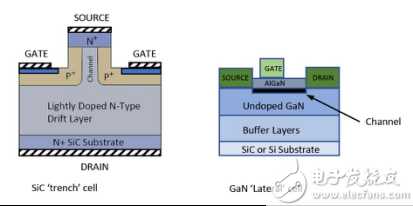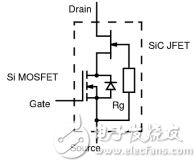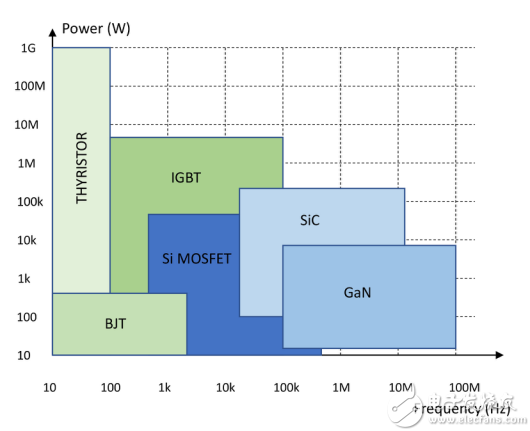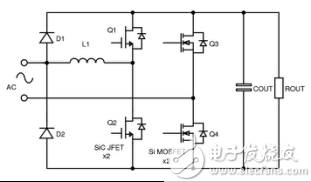Author: Zhongda Li, New Product Introduction Manager at United Silicon Carbide Company
Commitment to Wide Bandgap Devices
Wide bandgap (WBG) technologies such as silicon carbide (SiC) and gallium nitride (GaN) are currently hot topics in the power electronics industry. They offer the potential to significantly reduce the size of wireless charging systems, power converters, and more. However, these performance benefits are not just theoretical—they are backed by real-world capabilities.
Let’s start by understanding what a wide bandgap device is. In semiconductors, electrons occupy different energy levels in the valence band and conduction band. To enable current flow, electrons must transition from the valence band to the conduction band, which requires an energy input. In wide bandgap materials like SiC, this energy requirement is much higher than in traditional silicon devices. For example, SiC has a bandgap of 3.2 eV compared to 1.1 eV for silicon. This means that more energy is needed to excite electrons into the conduction band, leading to higher breakdown voltages. Additionally, SiC can operate at higher temperatures and has better thermal conductivity—about 3.5 times that of silicon. These properties allow WBG devices to function efficiently under high voltage, high temperature, and high power conditions.
Initially, SiC was used mainly in simple diodes. But with advancements in material technology, more complex devices like junction field-effect transistors (JFETs), metal-oxide-semiconductor field-effect transistors (MOSFETs), and even bipolar transistors are now available. Figure 1 shows a vertical trench structure of a SiC JFET, which offers very low on-resistance compared to the lateral structure of GaN HEMTs.

Although the SiC JFET is normally "on" at zero gate voltage, it is often paired with a Si MOSFET in a "co-source common-cascode" configuration. This hybrid device allows for gate drive compatibility with standard Si MOSFETs while preserving the advantages of wide bandgap technology. Figure 2 illustrates this arrangement.

Comparing SiC and GaN
While both GaN and SiC are promising, they have different strengths and market positions. GaN has higher electron mobility, allowing faster switching speeds, but its thermal conductivity is lower than SiC, limiting its power density. Currently, SiC devices are rated up to 1.2 kV or higher, whereas GaN is typically limited to 650 V. At the same voltage level, SiC is more cost-effective and mature. GaN is targeting markets like data centers, electric vehicles, and photovoltaics, aiming for lower costs in the future. However, SiC can also be used in these areas, especially in applications like bidirectional DC-DC converters and "Totem Pole PFC."
The SiC supply chain is well-established, with products readily available from major distributors. In contrast, GaN is still emerging. According to IHS data, by 2025, the total WBG market will reach $3.5 billion, with GaN accounting for only around $500 million.
Even when GaN's voltage rating increases, SiC holds a strong advantage in industrial systems due to its ability to withstand voltage avalanche conditions, such as those caused by inductive loads. Manufacturers have extensive reliability data showing SiC's resilience under overvoltage stress, while GaN is only guaranteed to stay below maximum voltage limits.
Another key difference is packaging. SiC devices are commonly packaged in TO-247 and TO-220, making them easy to replace existing MOSFETs. GaN, on the other hand, is mostly found in surface-mount, chip-scale packages, which limits its use to new designs. This makes it harder to integrate into legacy systems.
Interestingly, designers often face EMI challenges and need to control dV/dt, which may require using gate resistors to slow down switching. For example, a dV/dt of 100 V/ns can create significant current spikes, especially with stray capacitance. High di/dt can also cause voltage spikes on inductors.
Development Status
Cascode SiC devices typically have ratings of 650V and 1200V, with currents up to 85A and on-resistance around 30mΩ. Advanced "super cascode" SiC devices can handle over 3.5kV, supporting up to 1700V at 70A with 45mΩ on-resistance. However, their internal body diodes are slower, requiring external fast diodes in bridge circuits.
GaN devices are rated at 650V, with currents around 60A and on-resistance of about 25mΩ. They are comparable to many SiC devices and offer faster switching speeds. However, at 100V, their on-resistance isn’t better than traditional MOSFETs, so they rely on speed to justify their cost.
Looking ahead, while IGBTs and traditional MOSFETs will continue to grow, the adoption of WBG devices is expected to rise sharply. The debate remains which type of WBG device will dominate specific market segments. Figure 3 shows a possible future development of power devices based on power and frequency.

Applications
The high-temperature performance and fast switching capability of WBG devices make them ideal for critical military and industrial applications. Bridge circuits are widely used in high-power systems like inverters, soldering tools, Class D amplifiers, and motor drives. A notable application is the "bridgeless totem pole PFC" circuit. Traditional silicon-based circuits were limited by the slow body diodes in MOSFETs, forcing the use of "critical conduction" mode, which leads to high peak currents and EMI. Using a SiC cascode JFET enables "continuous conduction" mode, improving efficiency, reducing inductor size, and mitigating EMI issues. An example 1.5kW, 230VAC circuit achieved an impressive 99.4% efficiency.

Robustness Considerations
In high-power applications, robustness under transient short-circuit and overvoltage conditions is crucial. Cascode SiC JFETs excel in this area. High currents cause a "clamping" effect, limiting current to saturation. Additionally, thermal effects can reduce channel conductivity, enabling self-limiting behavior. The high junction temperature rating of SiC further enhances its reliability.
For overvoltage scenarios, the gate-drain diode of the SiC JFET turns on, directing current through the gate drive circuit and turning the JFET on to clamp the voltage. Even small wafer sizes provide sufficient safety margins for significant avalanche levels.
Companies like United Silicon Carbide have demonstrated the robustness of their SiC products, with components capable of 1000 hours of operation at 150°C under avalanche bias. As a final test, all devices undergo 100% avalanche testing.
Industrial UPS
Industrial UPS is a specialized power protection system designed to provide backup power to critical industrial equipment in the event of a power outage or fluctuation. It is commonly used in industries such as manufacturing, oil and gas, chemical processing, telecommunications, and data centers.
Performance:
Industrial UPS systems are built to withstand harsh environmental conditions and provide reliable and stable power to sensitive equipment. They offer high levels of protection against power disturbances like surges, spikes, sags, and voltage fluctuations. These UPS systems typically have a high fault tolerance and can provide instantaneous power transfer during a power outage, minimizing downtime and preventing damage to equipment.
Industrial UPS systems can deliver power in different forms, including online, line-interactive, and offline. Online UPS systems provide continuous power protection by continuously converting AC power to DC and then back to AC. Line-interactive UPS systems regulate voltage fluctuations while being connected to the AC power source. Offline UPS systems are the simplest and provide basic power backup during outages.
Application Scenarios:
1. Manufacturing: Industrial UPS systems are crucial in manufacturing plants where downtime can result in significant financial losses. They protect critical equipment such as robotic systems, programmable logic controllers (PLCs), and control systems, ensuring uninterrupted operation and preventing data loss.
2. Oil and Gas: In the oil and gas industry, UPS systems are used to safeguard critical equipment like pumps, compressors, and control systems. They ensure uninterrupted power supply, which is crucial for maintaining safety and preventing accidents in hazardous environments.
3. Chemical Processing: Industrial UPS systems are essential in chemical processing plants where precise control of equipment is necessary. They protect sensitive instruments, control systems, and data acquisition systems, ensuring uninterrupted operation and preventing loss of valuable data.
4. Telecommunications: UPS systems play a vital role in the telecommunications industry, protecting critical communication infrastructure such as servers, switches, routers, and data centers. They provide uninterrupted power supply, ensuring continuous connectivity and preventing service disruptions.
5. Data Centers: Industrial UPS systems are widely used in data centers to protect servers, storage systems, and networking equipment. They provide backup power during outages, preventing data loss and ensuring continuous operation of critical services.
Uninterruptible power supply, Industrial-grade, Reliable, Power protection, Backup power
Bosin Power Limited , https://www.bosinsolar.com
